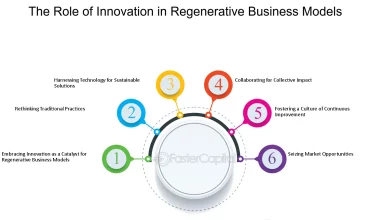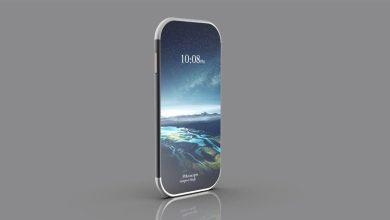
Creating Consistent UI Design: The Power of Design Systems
Design systems play a vital role in creating consistent and effective UI designs for various applications and websites. These systems provide a structured approach to Graphic designing services in San Francisco, ensuring that visual elements, typography, colors, and user interface components maintain a unified appearance and behavior. By establishing a set of guidelines and reusable UI components, design systems enable efficient collaboration among designers and developers, leading to faster and more streamlined project development. Moreover, they enhance the user experience by promoting familiarity and ease of use, making interactions with digital products more intuitive and enjoyable.

Benefits of Consistent UI Design
Consistent UI design offers numerous benefits to both users and designers. Firstly, it enhances user experience by providing a familiar and predictable interface, reducing confusion and learning curves. Secondly, it fosters brand recognition and strengthens brand identity, as users associate consistent visuals with the organization. Thirdly, it streamlines the design and development process, saving time and effort by reusing established design elements. Fourthly, it improves accessibility, as users with diverse abilities can navigate the interface more efficiently. Finally, consistent UI design boosts user trust and satisfaction, leading to higher engagement and increased loyalty toward the product or service.
Understanding UI Components
UI components are fundamental building blocks of user interfaces that facilitate interaction between users and digital products. These components encompass various elements such as buttons, forms, navigation bars, sliders, and more. Understanding UI components involves grasping their functionalities, appearance, and behavior within the overall interface. Designers and developers must comprehend how these components interact with each other to create a cohesive and intuitive user experience. By effectively understanding UI components, designers can efficiently utilize and customize them to suit specific design requirements, ensuring a consistent and user-friendly interface across different platforms and devices.
Building a Design System
Building a design system involves creating a comprehensive set of guidelines, rules, and reusable components that maintain consistency across all aspects of a user interface. It starts with identifying the brand’s visual identity and design principles, which will serve as the foundation. Designers collaborate to establish a shared language and component library, ensuring that all elements align with the brand’s style and usability requirements. Regular iteration and feedback from stakeholders help refine the system further. The result is a cohesive and efficient design framework that streamlines the design process, fosters collaboration, and delivers a seamless user experience across different products and platforms.
Implementing Design Guidelines
Implementing design guidelines involves putting the established principles and rules of a design system into practice during the actual design and development process. Designers and developers refer to these guidelines to ensure consistency in visual elements, typography, spacing, colors, and interactions across the user interface. By adhering to the guidelines, teams can maintain a unified and cohesive design language, irrespective of the number of people working on the project. Consistent implementation not only improves efficiency but also enhances the user experience, as users encounter a familiar and intuitive interface that reflects the brand’s identity and values.
Collaboration and Version Control
Collaboration and version control are crucial aspects of design system development. Design teams collaborate using version control tools to manage changes, track revisions, and ensure smooth teamwork. These tools allow multiple designers and developers to work concurrently on the same design system, preventing conflicts and ensuring seamless integration of updates. Version control facilitates the ability to roll back to previous versions if needed, maintaining stability and consistency. Efficient collaboration and version control processes empower teams to communicate effectively, maintain a single source of truth, and deliver a unified design system that adheres to shared guidelines, resulting in a cohesive user experience.
Maintaining and Updating the Design System
Maintaining and updating the design system is an ongoing process that ensures its relevance and effectiveness over time. Regular maintenance involves monitoring feedback from designers, developers, and users to identify areas for improvement. It also includes fixing bugs, addressing issues, and updating design assets as needed. Updating the design system involves adding new components, accommodating design changes, and incorporating emerging trends. Effective version control helps manage updates efficiently. By continuously maintaining and updating the design system, teams can foster collaboration, uphold consistency, and deliver high-quality user experiences that evolve with the needs and expectations of users and the organization.
Improving User Experience with Design Systems
Design systems significantly enhance the user experience by promoting consistency, predictability, and efficiency across digital products. By using a well-implemented design system, designers ensure that users encounter familiar interface elements and interactions, reducing confusion and learning curves. Consistent visual language and coherent navigation lead to a seamless and intuitive user journey. Moreover, design systems optimize performance and accessibility, enabling a wider range of users to interact with the product comfortably. Streamlined design and development processes facilitated by design systems result in faster loading times and smoother interactions. Overall, design systems play a crucial role in delivering delightful and user-centric experiences.
Why Firmroots?
Firmroots stands out as a top choice for Graphic designing services in San Francisco due to its unparalleled creativity, expertise, and commitment to excellence. With a team of highly skilled designers, Firmroots delivers innovative and visually compelling designs tailored to each client’s unique needs. The company’s extensive experience in the field ensures a deep understanding of design principles and user preferences. By incorporating cutting-edge tools and staying updated with industry trends, Firmroots consistently produces captivating and effective designs. Clients can trust Firmroots to provide exceptional graphic designing services that leave a lasting impression on their target audience. Read More Articles!




